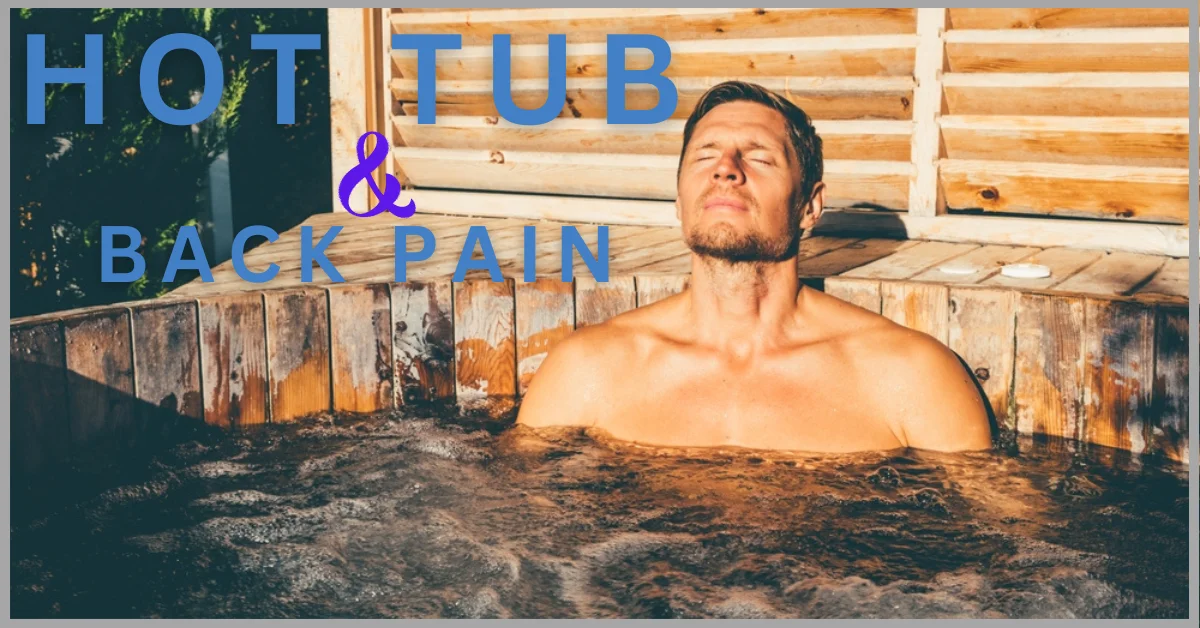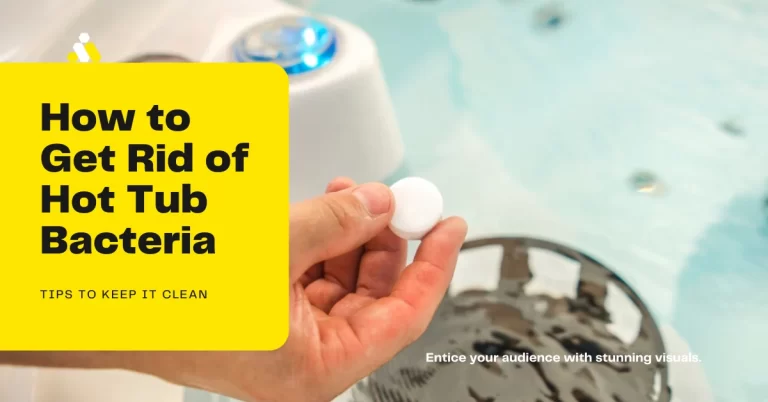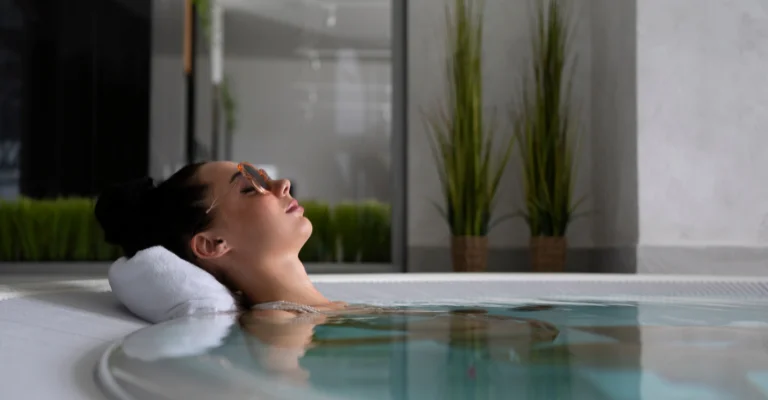The Surprising Truth About Hot Tub Makes Back Pain Worse
Find the surprising truth about how hot tubs might exacerbate back pain. Learn the potential impact of hot tub usage on back health and essential tips for relaxing without worsening discomfort.
Back pain is a prevalent issue affecting millions worldwide. Hot tubs have long been hailed for their potential to alleviate discomfort, but recent discussions have raised concerns about their impact on back pain.
Understanding the Dynamics
In my extensive exploration of Hot Tub Patio experiences, I’ve discovered a compelling topic worth delving into: the relationship between hot tubs and back pain. Contrary to popular belief, the soothing warmth of a hot tub might not always be a panacea for back-related woes.
Debunking the Myth:
Exploring the Misconceptions
Contrary to popular belief, hot tubs don’t universally exacerbate back pain. Instead, their effect largely depends on various factors, including temperature, duration of use, and individual conditions.
Temperature Management:
Finding the Optimal Temperature
Maintaining an appropriate hot tub temperature is critical. Experts recommend a temperature range of 92°F to 100°F for soothing back pain without causing further discomfort.
Duration Matters: Balancing Relief and Caution
The Role of Duration in Alleviating Back Pain
While soaking in a hot tub can offer relief, prolonged sessions might intensify back pain. Balancing the duration of use is crucial to avoid exacerbating discomfort.
Individual Considerations: Customizing the Experience
Tailoring Hot Tub Use to Personal Needs
Each individual’s response to hot tubs varies. Some find immense relief, while others experience increased discomfort. Consulting a healthcare professional can help determine personalized guidelines.
Always seek professional advice to tailor hot tub usage to your unique needs and conditions.
Consider alternating hot tub time with ice packs if you experience muscle tightness afterward. Pay attention to your body’s signals, and you’ll soon learn whether hot water therapy helps or hurts your back.

Tips for Using a Hot Tub Safely with Back Pain
When using a hot tub with back pain, it’s important to proceed with caution to avoid exacerbating your condition. While hot tubs can provide relief, improper use can lead to increased inflammation and discomfort. Here are some tips for safely using a hot tub if you have back pain:
- Limit Your Time: Keep your hot tub sessions short, ideally between 10-20 minutes, to prevent excessive strain on your back.
- Start with a Lower Temperature: Begin with a lower temperature setting, around 100-102 degrees Fahrenheit, and gradually increase it as you become accustomed to the heat.
- Take Regular Breaks: Exit the hot tub every 10 minutes to cool down. This prevents your body from overheating and helps reduce inflammation.
- Use a Hot Tub with Jets: Jets can provide a gentle massage, which can help relax your muscles and improve circulation in your back.
- Listen to Your Body: If you experience any discomfort or pain, immediately exit the hot tub. It’s important to prioritize your safety and comfort.
[wps_alert type=”primary”]Talk to your doctor if you have any concerns about using a hot tub. They can help you decide if it is right for you and give you specific advice on using it safely.[/wps_alert]
Can Hot Tubs Really Help with Back Pain?
Hot tubs are often touted as a remedy for back pain, and there’s some science behind this belief. The warm water in a hot tub can increase blood flow to the affected area, which helps relax tight muscles and reduce inflammation, providing temporary relief.
The Science Behind It
Hot tubs use hydrotherapy to alleviate pain. The warm water raises the temperature of the skin and underlying tissues, causing blood vessels to dilate and enhancing blood flow to the affected area. This increased blood flow delivers oxygen and nutrients, which can reduce inflammation and support healing.
Buoyancy for Relief
Additionally, the buoyancy of the water reduces pressure on the spine and joints, offering further relief. This effect allows for easier movement and less strain on the back, providing a temporary respite from pain.
While hot tubs can offer relief, they should be used safely and in conjunction with other treatments recommended by your healthcare provider.

Effectiveness of hot tubs in treating chronic back pain
Hot tubs may have some benefits for treating it, but they are not a cure and may only work for some. The possible effects is:
- – Hot tubs can provide heat therapy, which can help relax muscles, reduce spasms, increase blood flow, and promote healing. Heat therapy can also alter the pain sensation and make it more tolerable.
- – Hot tubs can also cause the body to release endorphins, natural painkillers, and mood enhancers. Endorphins can help reduce stress and anxiety, which may contribute to chronic back pain.
- – Hot tubs can also promote restorative sleep, essential for healing and recovery. Poor sleep quality can worsen chronic back pain and affect physical and mental health.
- – Hot tubs can also improve flexibility and mobility, which can help ease stiffness and improve posture. Poor posture and limited range of motion can aggravate chronic back pain and lead to more problems.
Hot tubs have risks and limitations
- – Hot tubs may not be suitable for people with certain medical conditions, such as heart problems, high blood pressure, diabetes, skin infections, or pregnancy. People with these conditions should consult their doctor before using a hot tub.
- – Hot tubs may not be effective for all types of back pain, such as nerve-related pain or inflammatory pain. People with these types of pain may need other treatments, such as medication, physical therapy, or surgery.
- – Hot tubs may have side effects, such as dehydration, overheating, skin irritation, or infection. People should follow safety precautions when using a hot tub, such as limiting the time and temperature, staying hydrated, keeping the water clean, and avoiding alcohol or drugs.
- – Hot tubs may not address the underlying causes of chronic back pain, such as injury, degeneration, or lifestyle factors. People should seek professional diagnosis and treatment for their back pain and not rely on hot tubs alone.
Mitigating Risks: Tips for a Back-Friendly Soak
Understanding the nuances is crucial for anyone seeking to enjoy hot tubs without worsening their back condition. Here are some expert-backed suggestions:
1. Optimal Temperature and Duration: Maintain a moderate temperature and limit your soaking time to 15-20 minutes to prevent overheating and excessive strain on the back.
2. Supportive Seating and Posture: Choose ergonomic seating within the hot tub and ensure proper posture to avoid unnecessary stress on the back muscles.
3. Gentle Movements and Stretching: Engage in gentle movements or light stretches to promote relaxation without overexerting the back. For more about Hot Tubs and Body Temperature: What You Need to Know.
[wps_youtube url=”https://youtu.be/okmaouUFVUY” responsive=”yes” autoplay=”yes”]
Alternatives to Hot Tubs for Back Pain Relief
- Physical therapy: Physical therapy involves exercises and stretches designed to strengthen the muscles that support the Spine and improve flexibility. It can also teach proper posture and body mechanics to help prevent back pain.
- Yoga: Yoga is a form of exercise that involves a series of postures and breathing exercises that can help to improve flexibility, strength, and balance. Certain yoga poses can help to stretch and strengthen the muscles that support the Spine and can help to reduce back pain.
- Massage: Massage therapy can help to relieve muscle tension and pain by promoting blood flow to the affected area. It can also help to improve the range of motion and reduce inflammation.
- Acupuncture: Acupuncture is a traditional Chinese medicine technique that involves the insertion of thin needles into specific points of the body. This can help to relieve pain and improve function.
- Chiropractic: Chiropractic is a form of alternative medicine that focuses on diagnosing and treating neuromuscular disorders. Chiropractors use manual manipulation and adjustments to the Spine to help reduce back pain.
- Medications: Over-the-counter pain relievers, such as ibuprofen or acetaminophen, can help reduce pain and inflammation.
For more reading about Hot Tub Therapy for Fibromyalgia
Closing Remarks:
When approached with care, hot tubs hold the promise of easing back pain. Managing temperatures, controlling soaking time, and factoring in personal considerations are pivotal in harnessing their potential.
In summary, navigating the interplay between hot tubs and back pain demands attention, yet careful adjustments and personalized usage can mitigate the possibility of “Hot Tub Makes Back Pain Worse” while enhancing the therapeutic advantages for relief.
For additional information, visit Hot Tub Patio, or if you’re interested in more reading, see hot tub safety guideline.
Common Queries:
Q: Are hot tubs suitable for lower back pain? A: Hot tubs can temporarily relieve lower back pain, but consulting with healthcare professionals is essential before using them.
Q: Why does my back hurt worse with heat? A: Applying heat to an injured area can increase blood flow and promote healing, but in some cases, it can also cause inflammation and worsen the pain. Consult with a healthcare experienced to decide if heat therapy is appropriate.
Q: Why does my body ache after the hot tub? A: Soaking in a hot tub for an extended period can cause muscles to relax and loosen, leading to aches and pains. It’s important to not stay in the hot tub for more than 15-20 minutes and to drink plenty of water before and after using it.
Q: Does heat make your back worse? A: Applying heat to an injured area can increase blood flow and promote healing, but in some cases, it can also cause inflammation and worsen the pain. Consult with a healthcare professional to determine if heat therapy is appropriate.
Q: What is the fastest way to relieve back pain? A: Over-the-counter pain relievers, heat or cold therapy, gentle stretching, and exercise can help to reduce pain. Consult with healthcare professionals to determine the best course of treatment.
Q: How do you know if back pain is muscle or disc? A: Soreness or stiffness in the affected area and pain that improves with movement may indicate muscle pain. In contrast, numbness, tingling, or weakness in the legs and pain made worse with certain positions or movements may indicate disc pain. Consult with a healthcare professional to determine the specific cause of your back pain.
Q: What can be mistaken for back pain? A: Back pain can be mistaken for various conditions. It’s essential to consult with a healthcare professional to determine the specific cause of pain.
Q: What test shows back pain? A: Tests such as X-ray, MRI, CT scan, ultrasound, physical examination, and medical history can be used to diagnose the cause of back pain.
Q: How do I know if my back pain is spinal? A: Spinal pain originates from the Spine, stiffness, soreness in the affected area, pain that improves with movement, and pain that is made worse with certain positions or movements may indicate spinal pain. Consult with a healthcare professional to confirm the diagnosis.













